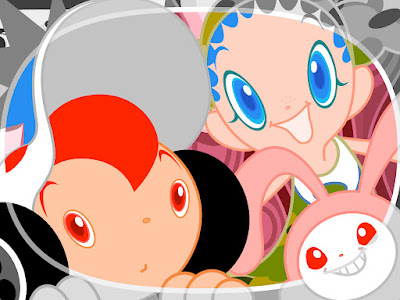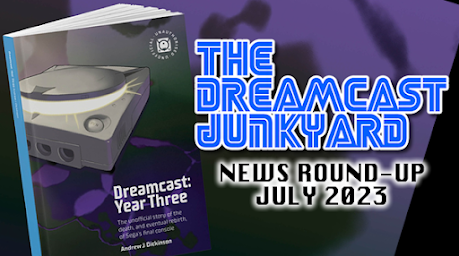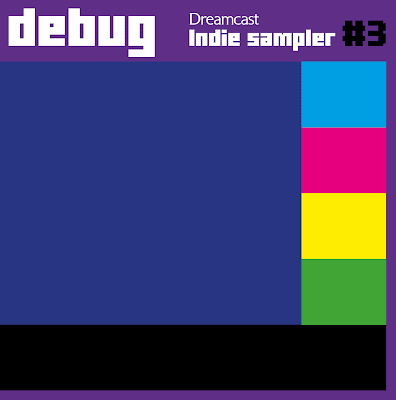Ok, let's get this clear from the off. Any developer that has the gumption to produce a shoot-em-up for the Dreamcast has their work cut out. The console was blessed with such a phenomenal array of shmups, from the seminal Ikaruga (2002) to the idiosyncratic Radirgy (2006), that creating something that will stand out is a gargantuan undertaking.
Around a dozen indie contenders have attempted this feat over the preceding two decades, and, although each has its charms, in my eyes there have only been a couple that truly cut the mustard. Fortunately, with Andro Dunos II, it seems we may have another indie shmup that can go toe-to-toe with the big-hitting NAOMI-based official releases (or, at the very least, put up a commendable fight).
Developed by Picorinne Soft and published by JoshProd/PixelHeart, this side-scrolling shmup is a contemporary sequel to Visco's 1992 Neo-Geo arcade game - a title which also appeared on the Dreamcast last year (our review of which is available here). In terms of fundamental game design, there is nothing revolutionary present. The task assigned to players is the same as it has been for decades: direct your ship through a succession of stages, shoot enemies, dodge incoming fire and rack up as high a score as possible. And of course, each of the seven stages closes out with a mammoth boss fight. A simple formula then, but one which Andro Dunos II executes very well in a number of respects.

Firstly, the fundamental gameplay mechanics are solid. When using the regular Dreamcast controller, the controls are intuitive, responsive, and your ship glides around the screen at an ideal pace: not so fast to make things uncontrollably twitchy, and not so slow that dodging incoming fire seems unreasonably hard. Just as important is the fact that enemy projectiles are easily distinguishable, and your hit box, while a little chunky, is perfectly serviceable. These may seem like pretty mundane basics but are prerequisites for a fun shmup experience. In essence, you need to be able to feel that defeat is down to user-error rather than poor game design, which is thankfully the case here.
Secondly, while the core activity of guiding a ship through levels filled with enemies is par for the course, Andro Dunos II does feature several elements that give it some depth and replayability. For starters, there are four weapon types with distinct characteristics at your disposal. Flitting between these quickly to suit your surroundings, combined with choosing how to allocate upgrades between levels, brings a problem-solving element into play and means that you can attempt different strategies over numerous runs. The varied designs of the levels, and in particular the presence of impermeable terrain that periodically encroaches onto your screen, as well as enemies that move and attack in a wide range of ways, only amplifies this. Dexterity and accuracy of movement within the immediate field of fire remain vital of course, but your choice of weapon, tactical deployment of the 'super shot' and overall ship placement are also important here. When you manage to master these aspects, Andro Dunos II is highly rewarding. The wide variability in difficulty settings should offer something suitable for most players too, and the unlockable boss rush mode offers a decent reward for those who make it through the seven regular stages.

Thirdly (is that even a word!?!), the game's aesthetics and audio pull together nicely to forge a vibrant up-beat atmosphere. The graphics are certainly not pushing the limits of the Dreamcast's hardware, but the Neo-Geo-style sprites and layered backgrounds are superbly drawn and take you on a journey through a broad range of scenarios without the game losing its cohesiveness. The synth-heavy electro-rock soundtrack complements the gameplay well too without becoming repetitive.
Of course, all of these positives would count for naught if the game didn't run well. Slowdown and frame-rate drops, amongst many other types of bugs, aren't unknown drawbacks for shmups on the Dreamcast, but thankfully they are nowhere to be seen here. In my experience, Andro Dunos II was buttery smooth and looked gorgeous over a VGA output. Videophiles may well have some gripes, but I imagine average players (like myself) will be satisfied with the presentation. The extensive two minute loading time before the game's main menu seemed foreboding at first, but, if intentional, is actually a clever move as it means that loading is brief between levels. The trade off is well worth it, and in any case, gives you just enough time to brew a cuppa (or scroll the DCJY Discord channels).
Although the Dreamcast version has arrived a year later than its initial outings on more contemporary platforms like the Nintendo Switch and the PlayStation 4, Andro Dunos II immediately piqued my interest more than some other recent Dreamcast releases as it is actually something new.
Sadly the same can't be said of the game's clichéd premise: saving the earth from an alien race. I wasn't exactly expecting Franz Kafka, but surely it wouldn't hurt to open our horizons up a little wider here? Just as there are heaps of gifted programmers in the Dreamcast scene, I'd bet there are also plenty of creative writers who could contribute something a little more stimulating.













